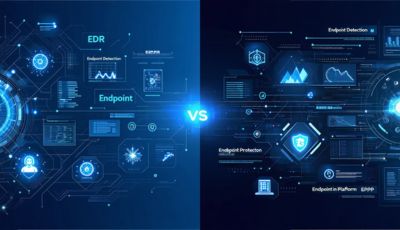What Is a Secure Email Gateway (SEG)?
A Secure Email Gateway is a security solution—available on-premises, in the cloud, or as a hybrid deployment—that scans and filters all incoming and outgoing email traffic. It blocks malicious content, prevents data leaks, enforces compliance policies, and ensures that only safe, authorized communications reach your employees or leave your organization.
Core functions include:
- Threat Detection: Identifies and blocks phishing, malware, ransomware, and business email compromise (BEC) attempts.
- Spam Filtering: Eliminates unwanted messages to keep inboxes clean.
- Data Loss Prevention (DLP): Stops sensitive information from leaving the organization without authorization.
- Email Encryption: Secures sensitive messages in transit to protect confidentiality.
- Cloud Integration: Works seamlessly with services like Microsoft 365 and Google Workspace.
Why Choose Secure Email Gateway?
Core Problems SEG Solves
- Phishing & Malware: Reduces the risk of successful email-based attacks.
- Spam Overload: Cuts down non-essential emails to improve productivity.
- Data Leakage: Prevents accidental or malicious sharing of sensitive data.
- Compliance Violations: Meets regulatory requirements like GDPR, HIPAA, and CCPA.
- Limited Visibility: Provides actionable threat intelligence to strengthen security policies.
Business Benefits
- Enhanced Security: Multi-layered filtering to detect known and emerging threats.
- Regulatory Compliance: Built-in controls for industry-specific regulations.
- Operational Efficiency: Less time wasted sorting through spam or remediating attacks.
- User Confidence: Employees work confidently, knowing communications are protected.
- Scalability: Deploy SEG for any business size—from small startups to global enterprises.
Key Features of Secure Email Gateway
Implementation Insights
Deploying a Secure Email Gateway successfully requires more than just technical installation—it needs strategic planning and integration with your security policies.
Best Practices for Implementation:
- Assess Current Risks: Evaluate your organization’s email threat exposure and compliance requirements.
- Define Security Policies: Set rules for inbound filtering, outbound scanning, and encryption triggers.
- Integrate With Existing Tools: Ensure seamless operation alongside security information and event management (SIEM) systems.
- Enable Advanced Threat Protection: Leverage sandboxing to detect zero-day malware and targeted phishing.
- Educate Employees: Train staff to recognize and report suspicious emails.
- Monitor and Optimize: Use reports and analytics to refine filtering rules and response times.
SEG vs. Cloud Email Security (CES)
While the terms are often used interchangeably, Secure Email Gateway (SEG) traditionally refers to dedicated filtering solutions, whereas Cloud Email Security (CES) is delivered entirely via the cloud and often includes AI-driven threat detection.
SEG Pricing Models
The ITBroker.com Advantage
When you choose ITBroker.com for SEG implementation, you get:
- Strategic Alignment: Security solutions matched to your risk profile and compliance needs.
- Contract Assurance: Flexible agreements to avoid vendor lock-in and ensure ROI.
- Cost Optimization: Competitive pricing and efficient resource allocation.
- Expert Access: Guidance from specialists with experience in complex SEG deployments.
FAQs About Secure Email Gateway
Q: Is an SEG necessary if we already use cloud email?
A: Yes—cloud-native platforms still benefit from advanced filtering and DLP.
Q: Does SEG slow down email delivery?
A: Quality solutions process emails in milliseconds, so delays are negligible.
Q: Can SEG stop business email compromise (BEC)?
A: SEG solutions can detect BEC attempts through pattern analysis and authentication checks.
Q: Do SEGs handle outbound emails?
A: Yes, many solutions scan outbound traffic for data loss prevention and encryption needs.







.png)
.png)
.png)
.jpg)
.jpg)
.jpg)



